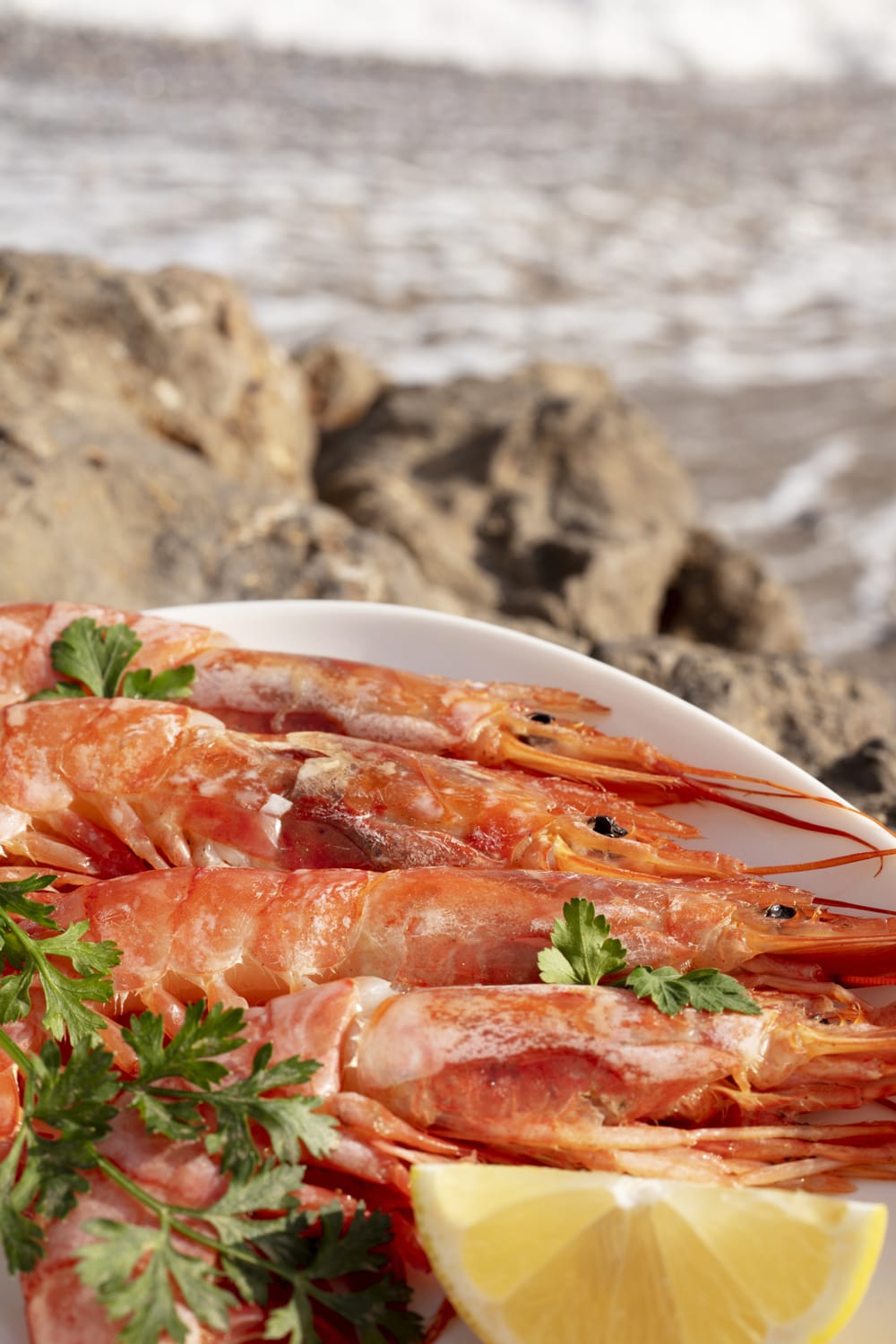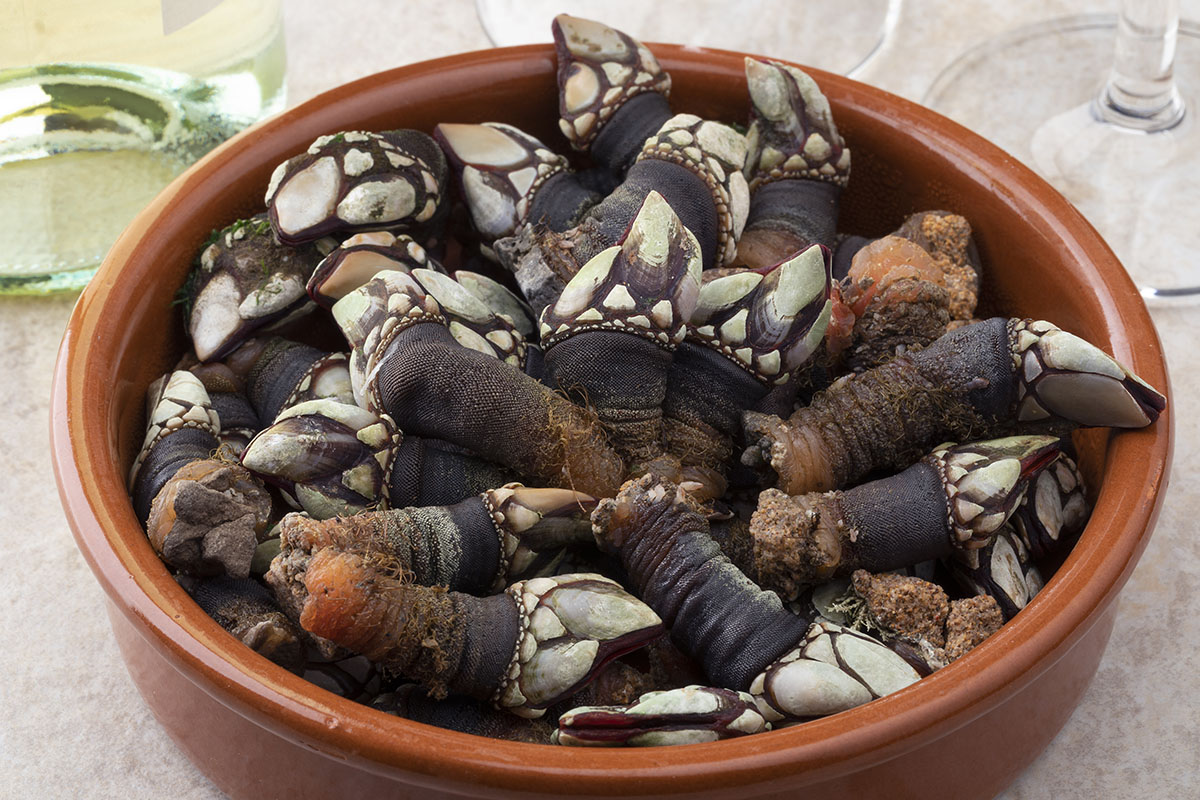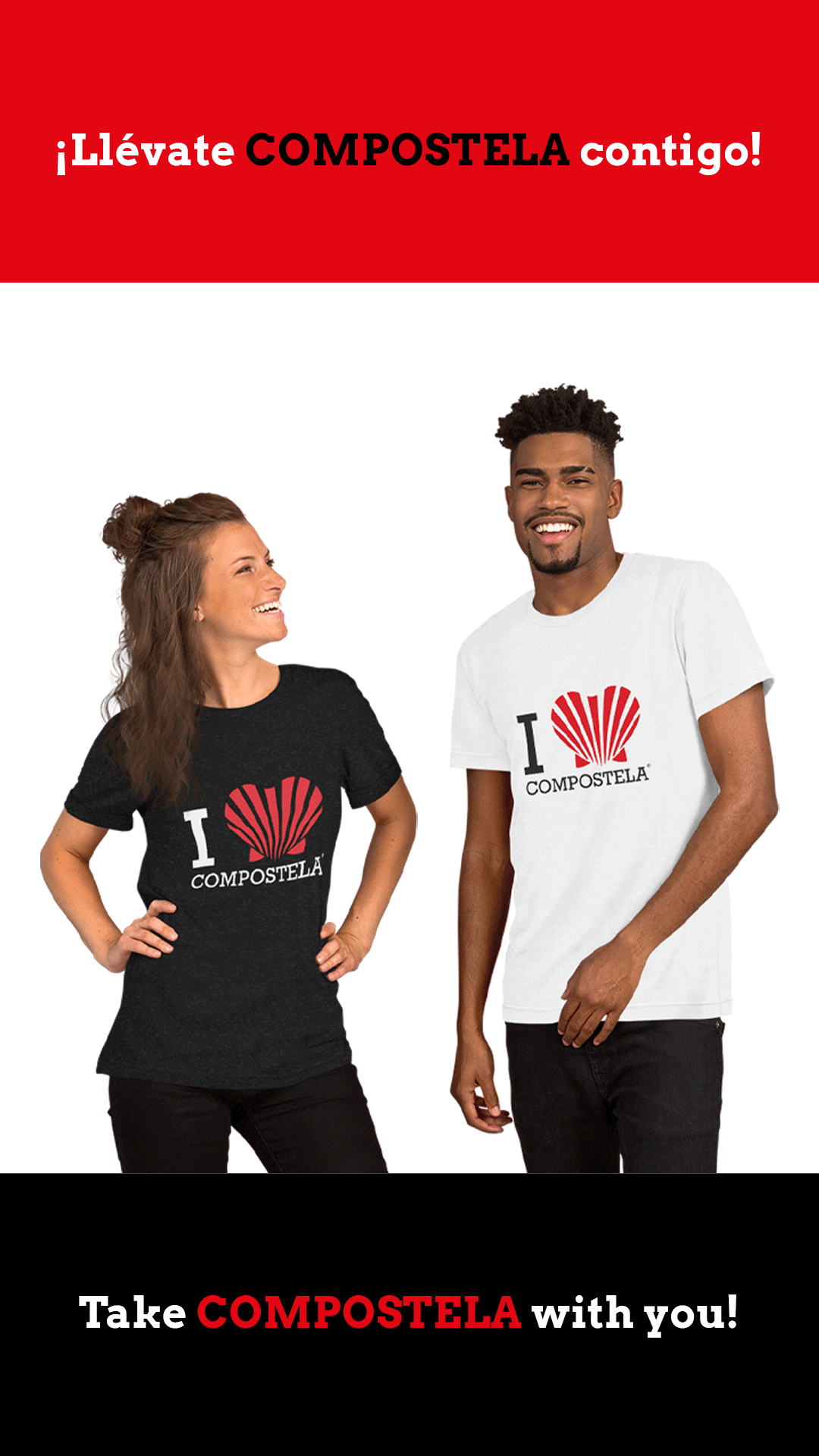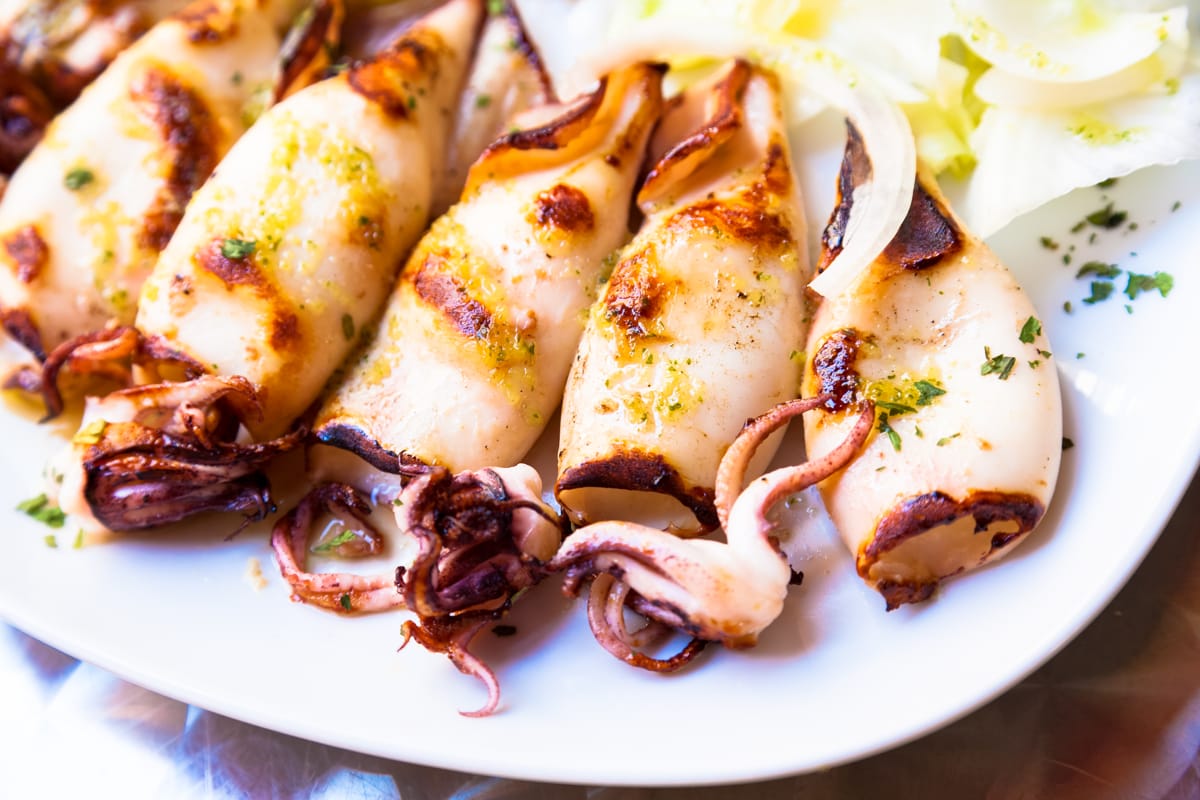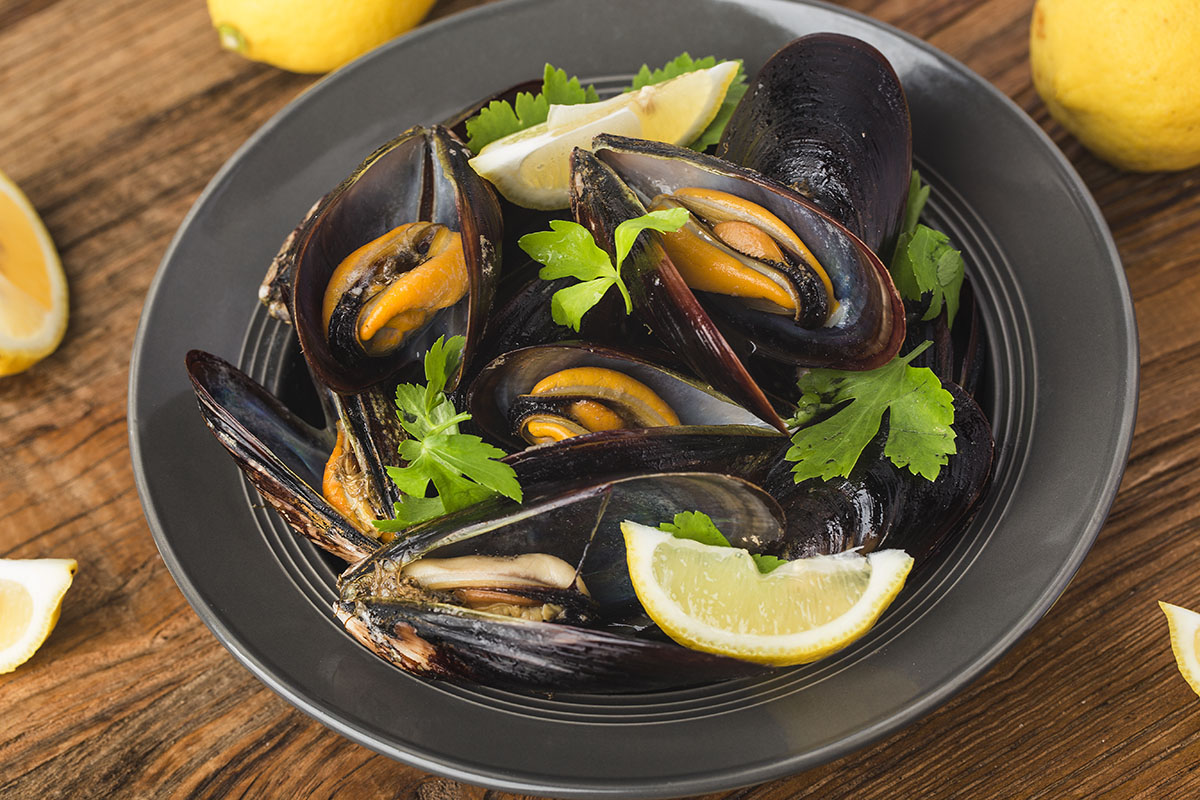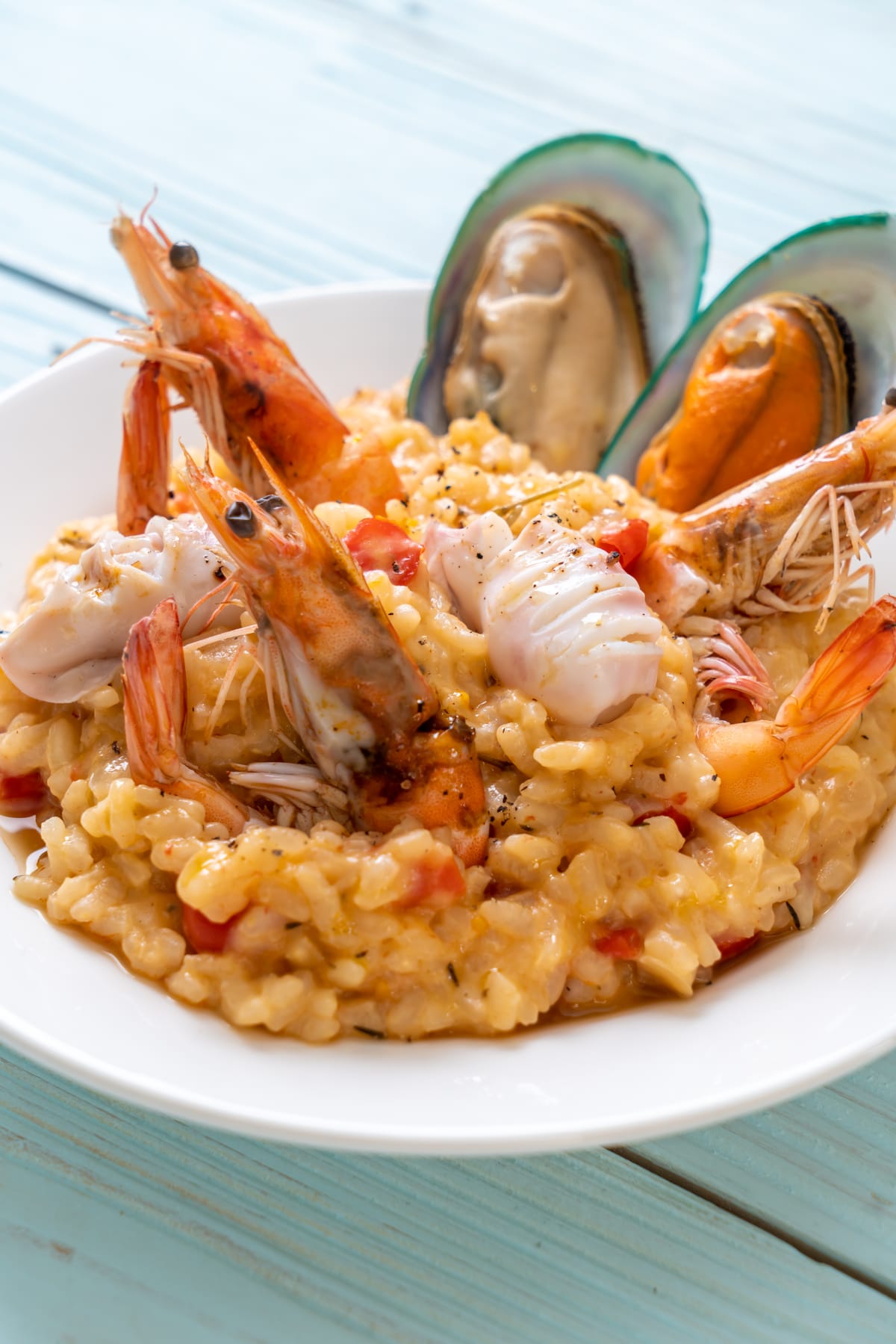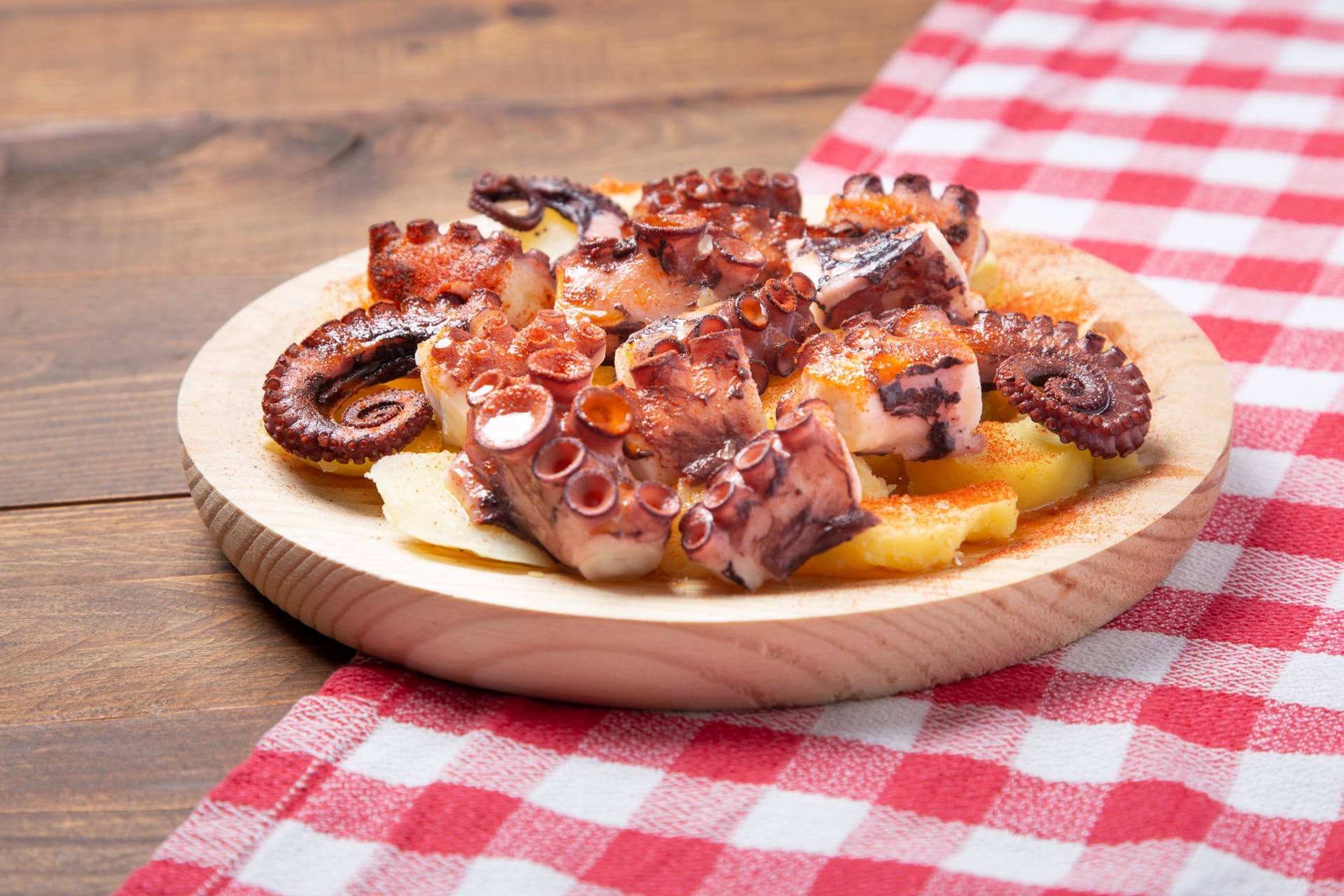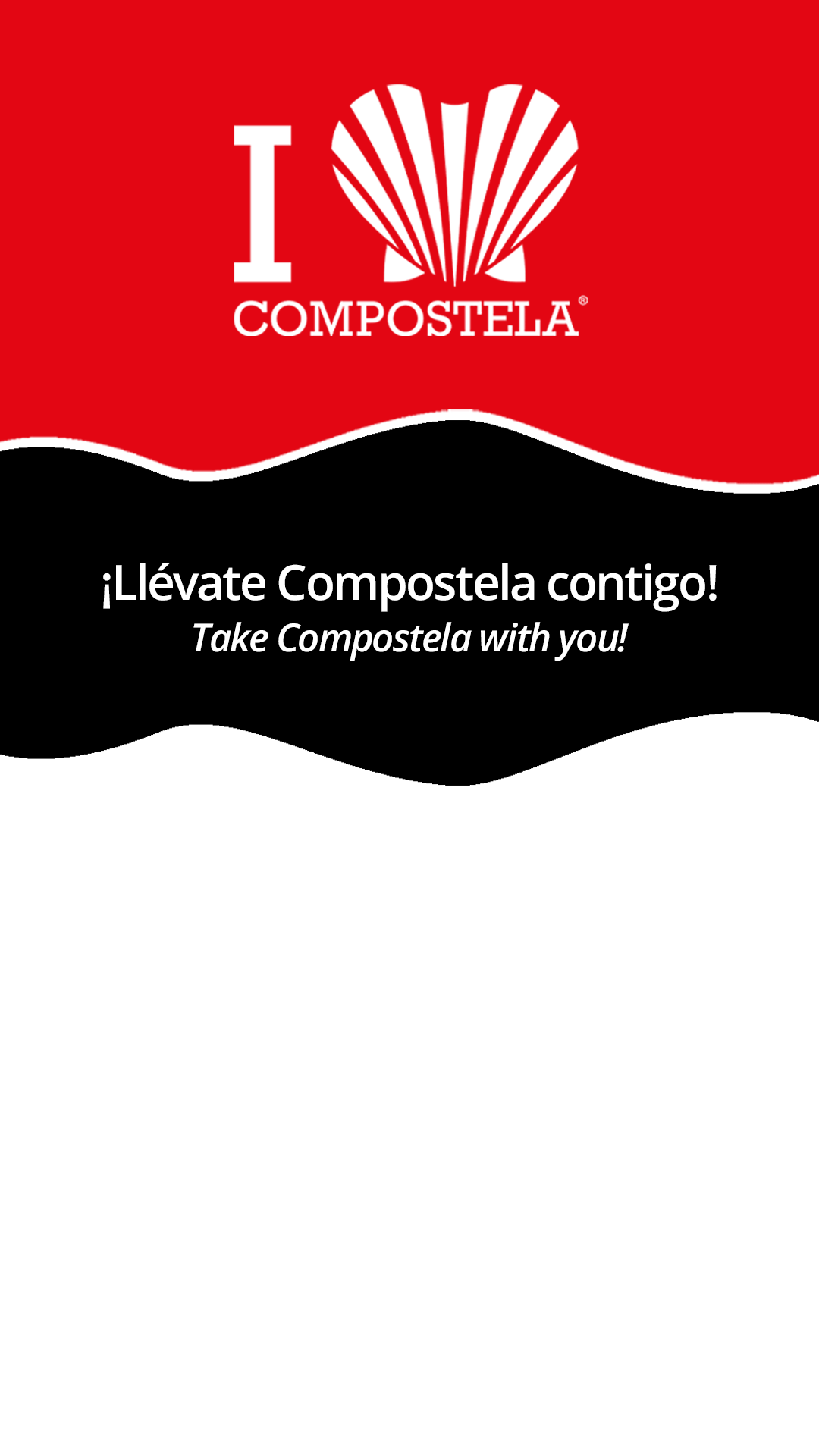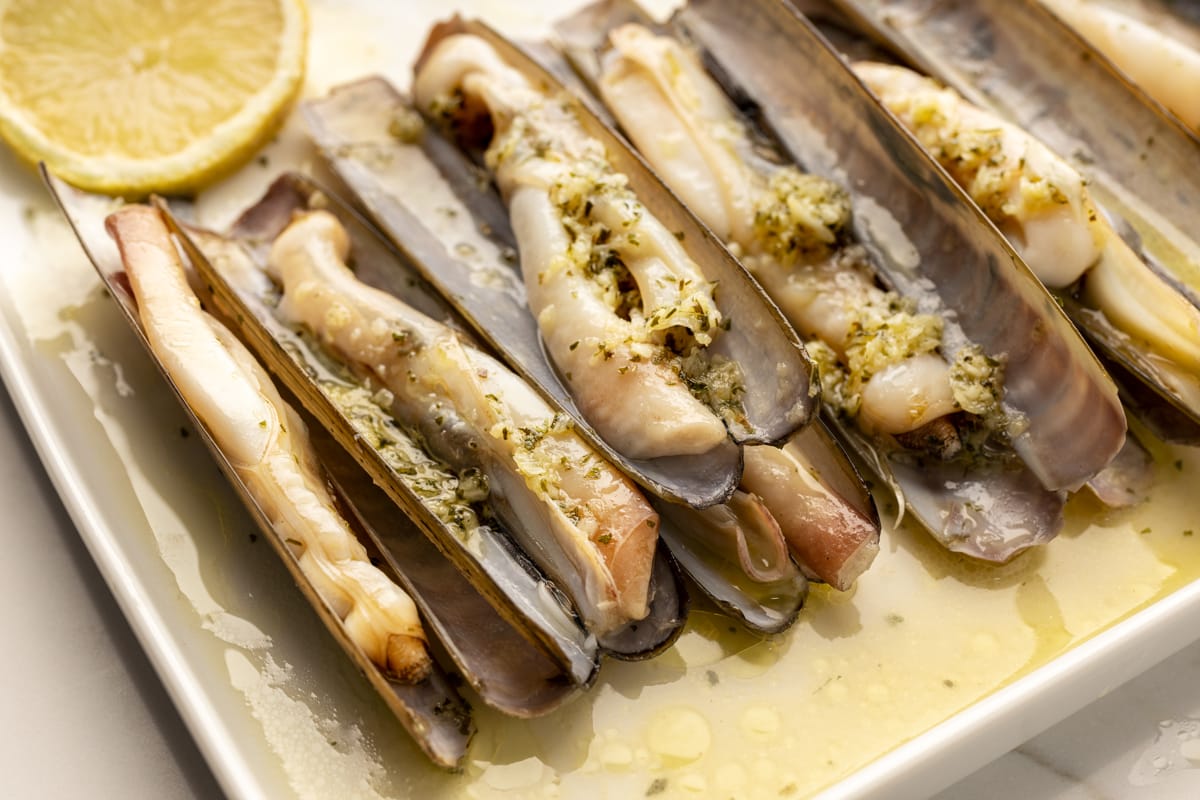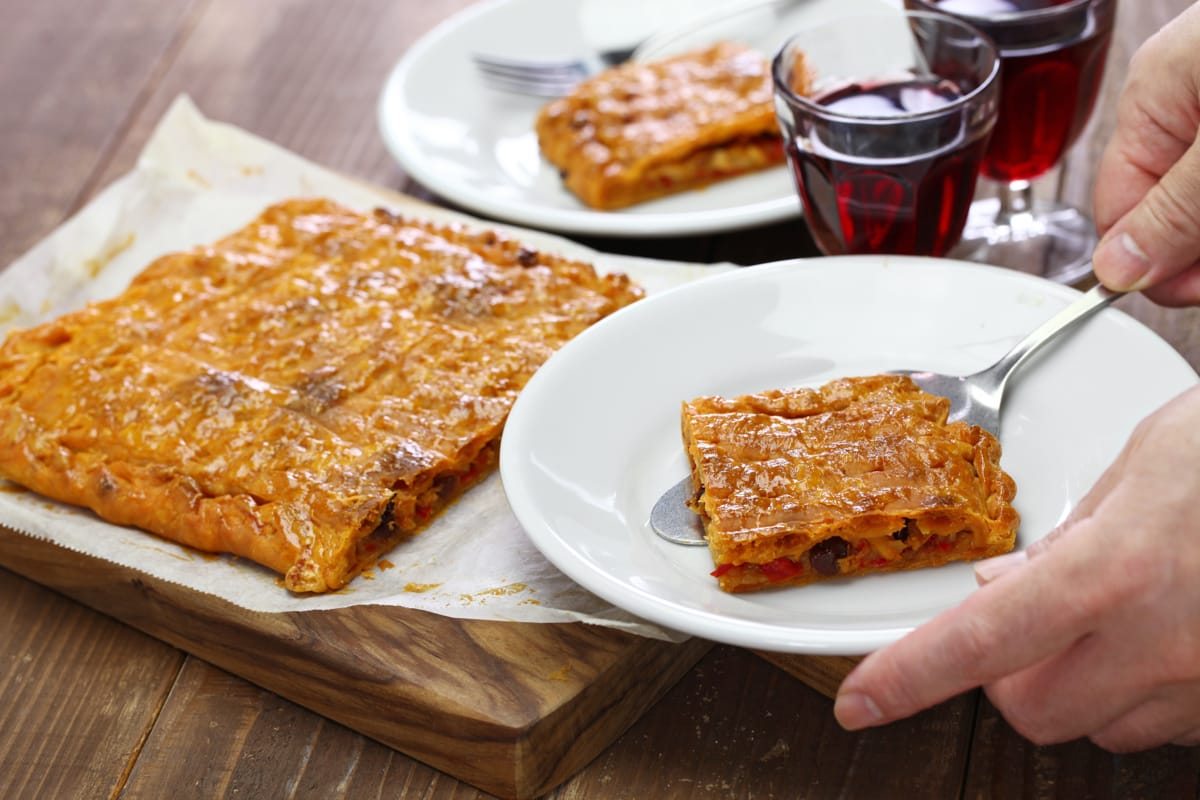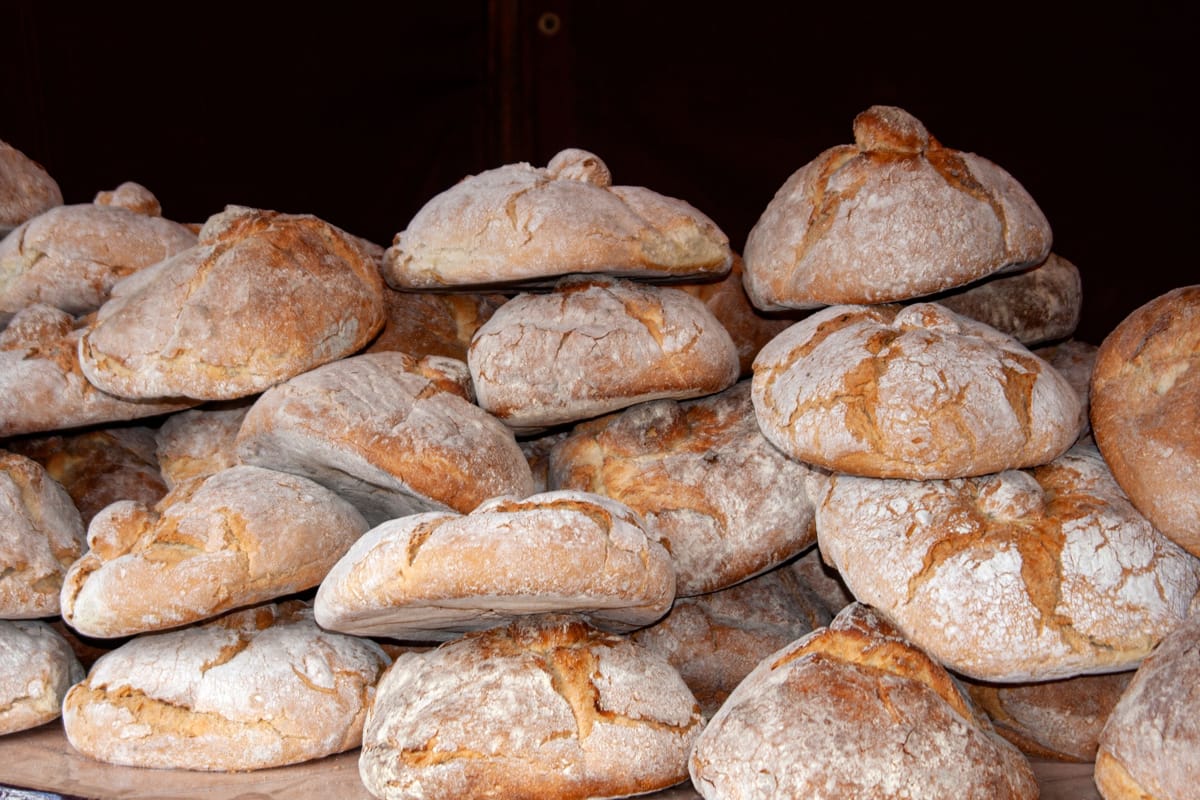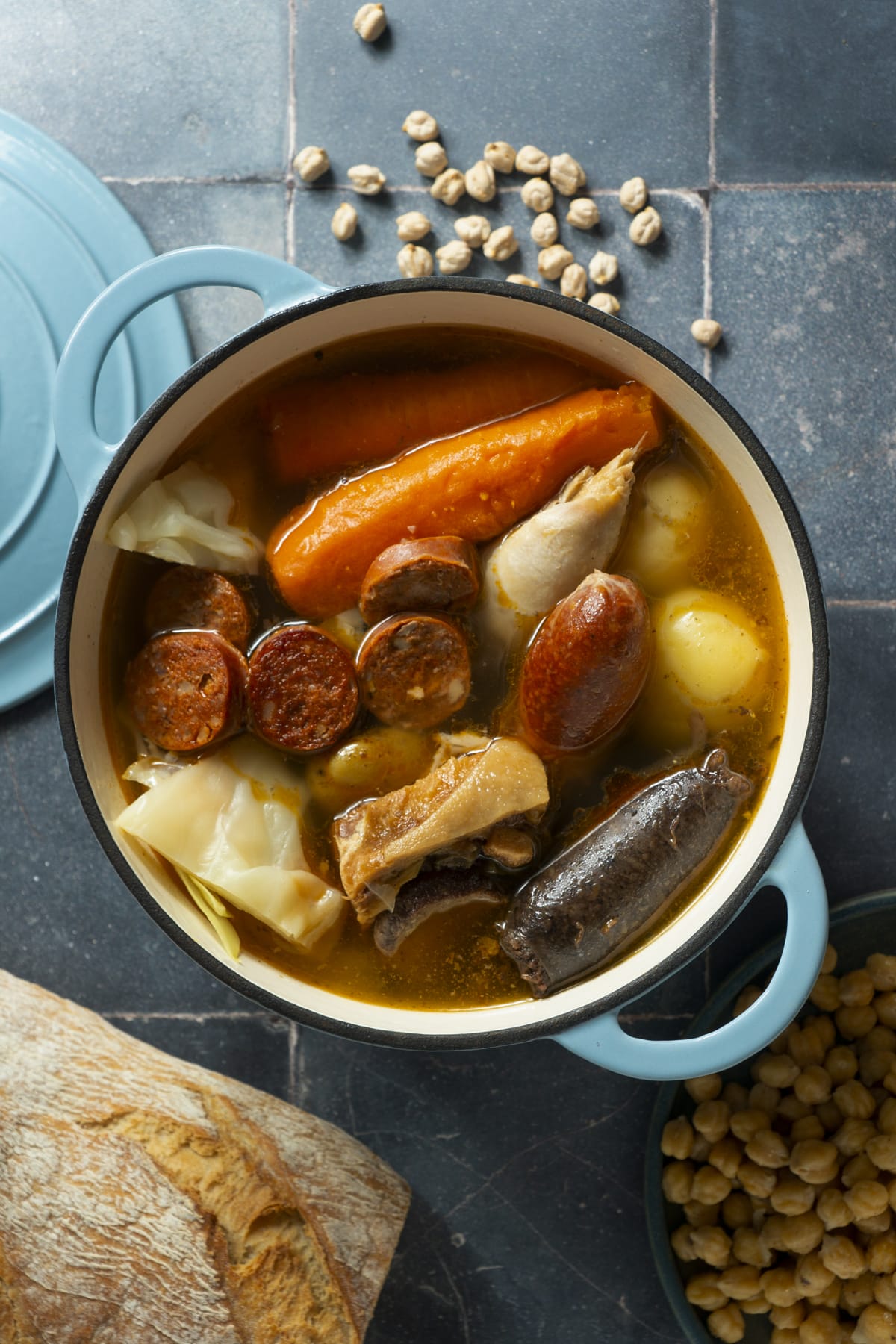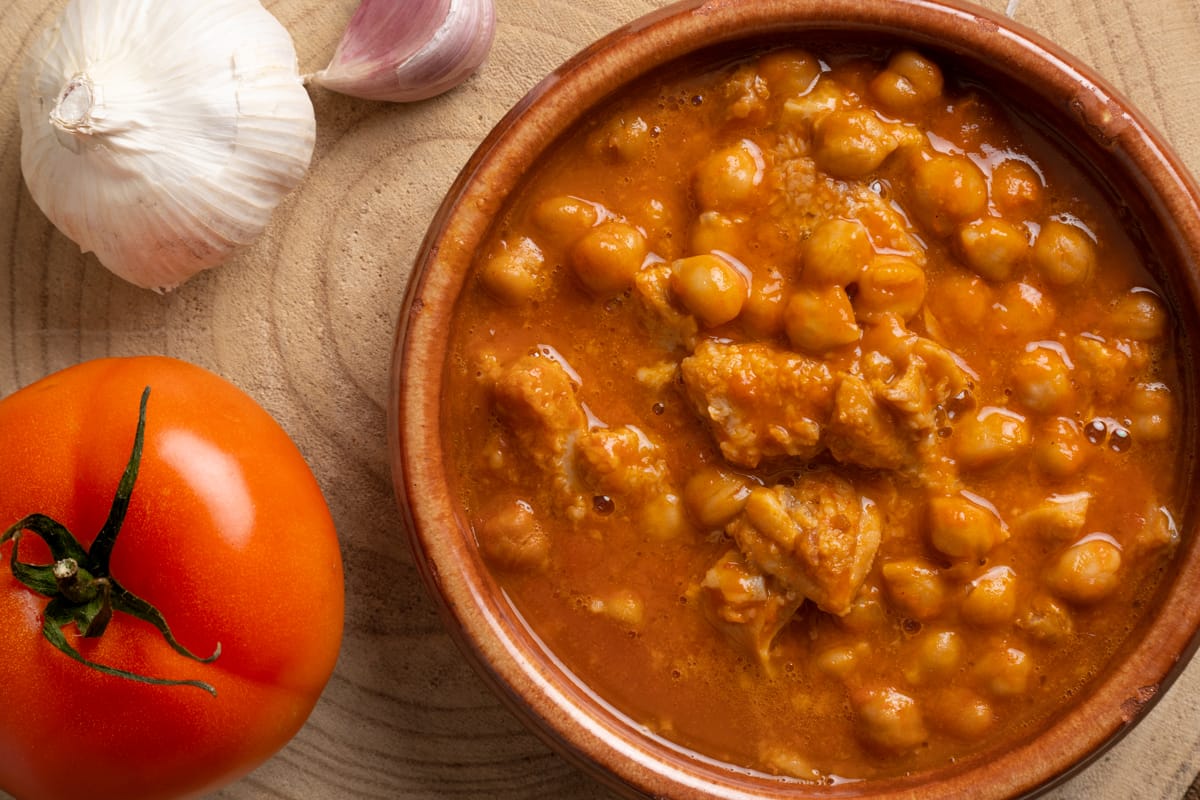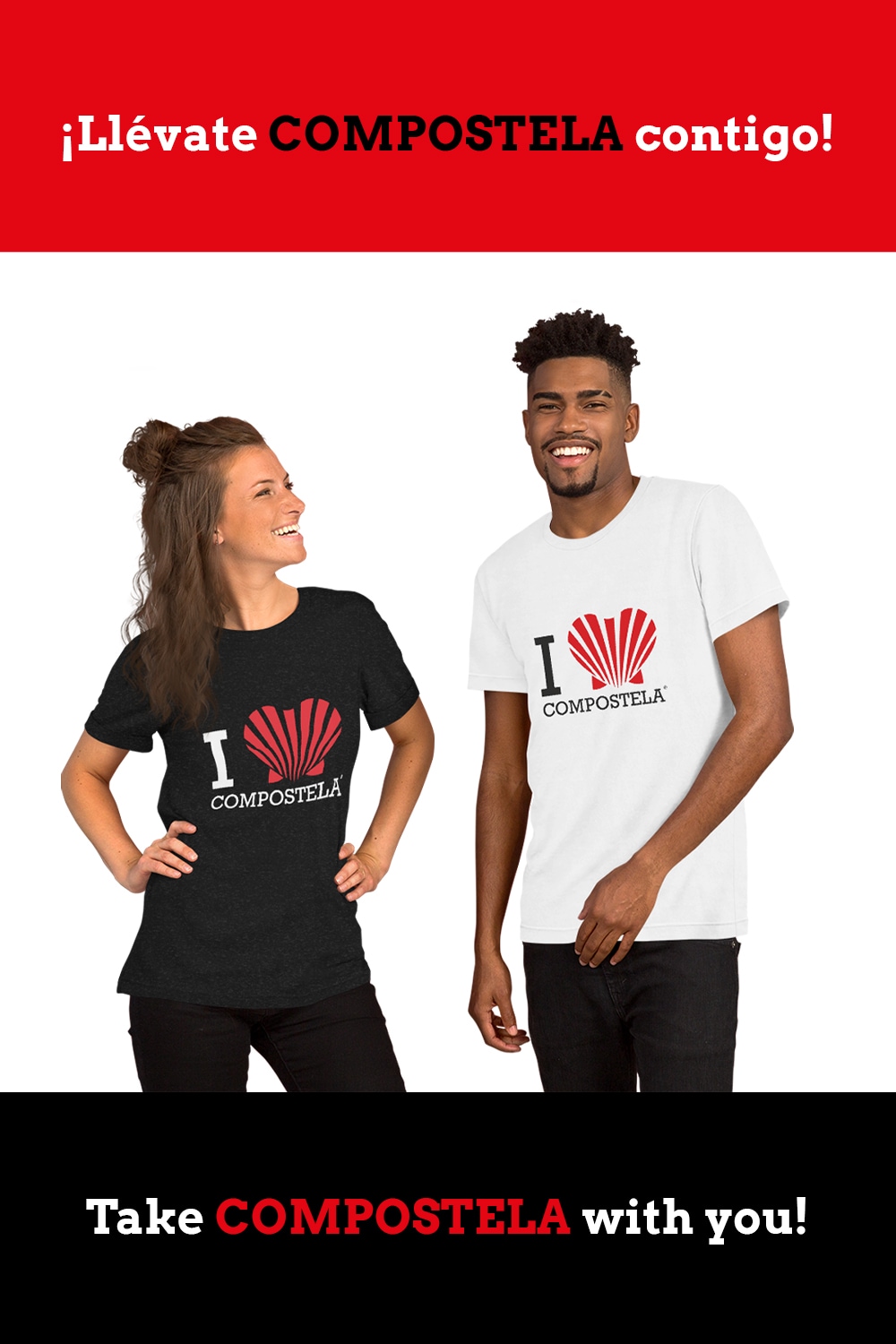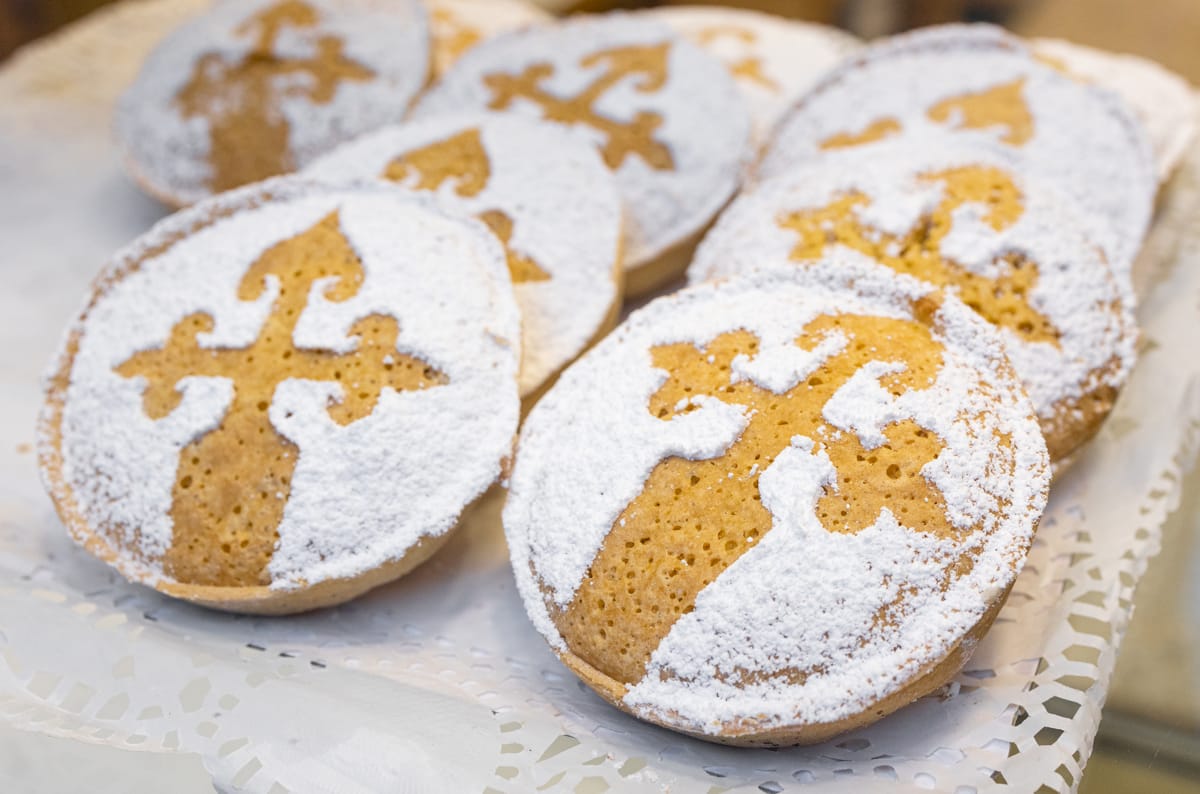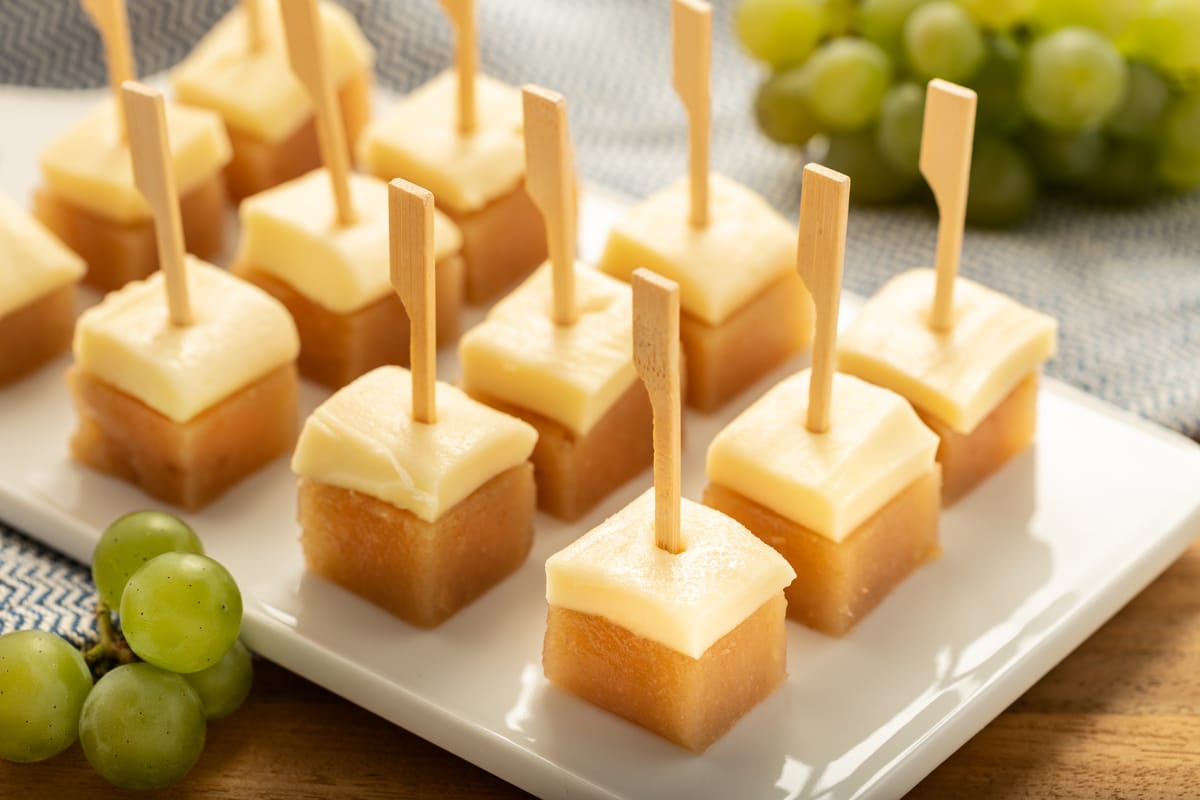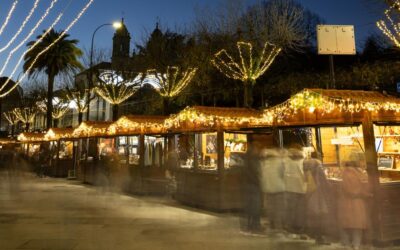know our
gastronomy
Galicia’s wealth in this field is famous beyond our borders. In I LOVE COMPOSTELA we present you some of our most famous dishes.
All types of dishes
The best seafood and great fish
Galician gastronomy is one of the richest and most varied in Spain, characterized by a high quality of raw materials and a culinary tradition rooted throughout the centuries. This region, located in the extreme northwest of the Iberian Peninsula, benefits from a privileged climate, with a coastline that stretches for more than 1,200 km and that offers a great variety of fish and seafoodas well as a high quality beef from the autochthonous Rubia Gallega breed..
Among the most outstanding dishes of Galician gastronomy is the Galician octopus, one of the most popular dishes of the region. This dish is made with cooked octopus, potatoes, paprika and olive oil, and is served with a sauce of oil, salt and paprika.
Among the seafood dishes, the clams a la marinera, grilled razor clams, steamed mussels and barnacles, which are considered a delicacy throughout Spain, stand out. Cooked seafood is also very popular and is served in seafood restaurants throughout Galicia. Galician seafood is famous all over the world for its quality and freshness, thanks to the optimal conditions of the Galician coast.
Another ingredient widely used in Galician cuisine is cod, which is prepared in many different ways, such as Galician style, in the form of croquettes, with raisins in pies, etc.
Galician fish and seafood are of exceptional quality, thanks to the richness of Galician waters and sustainable fishing techniques.
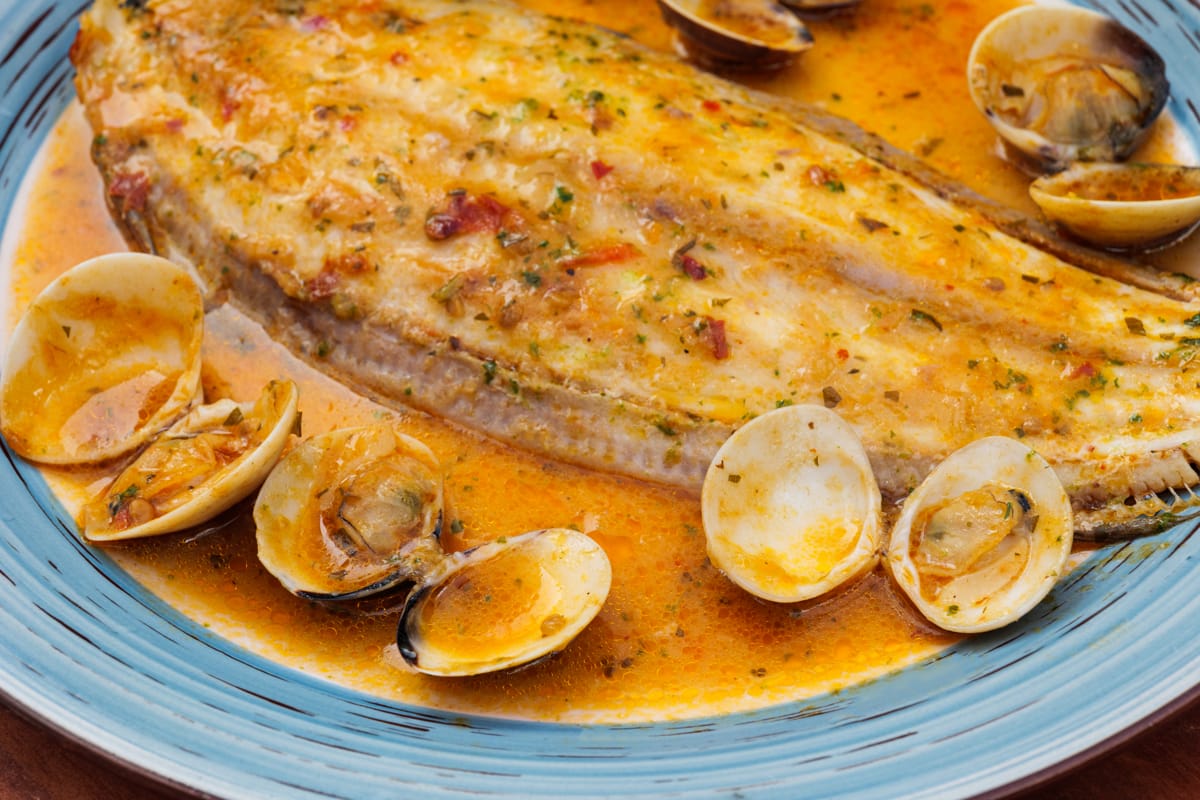
Excellent meats
Galician veal is one of the most highly valued meats in Spain, thanks to the quality of its meat, which is tender, juicy and pink. It is a product of recognized quality at the national level, thanks to its natural diet and free-range breeding in the Galician mountains. The cattle are fed on natural grasses and spring water. Veal is prepared in many different ways, such as churrasco, roast beef or breaded steaks.
Another popular dish is lacón con grelos, made with cooked pork, turnip greens (turnip greens), potatoes and chorizo sausage.
Also well known is raxo, a simple and delicious dish consisting of seasoned pork fillets fried in olive oil.
The secret of Galician raxo lies in the quality of the ingredients. Pork fillets should be of high quality, and cut into small, thin pieces. They are then seasoned with salt, pepper and garlic, and left to marinate for a few hours to take flavor. Finally, they are fried in hot olive oil until golden brown and crispy. The result is a tasty and juicy dish that can be served with french fries and salad, or with white rice.
Also highly valued is the zorza, made with pork marinated with paprika and other seasonings. This meat is minced and mixed with garlic, salt and olive oil, and left to marinate for several hours before cooking. Zorza is used as an ingredient in many Galician dishes, such as empanadas, filloas and tortillas, and is an essential part of the region’s traditional cuisine.
In addition to these traditional dishes, the gastronomy of Galicia has a wide variety of seasonal products, such as mushrooms, asparagus, turnip greens, Padrón peppers and chestnuts, which are used in many different preparations.
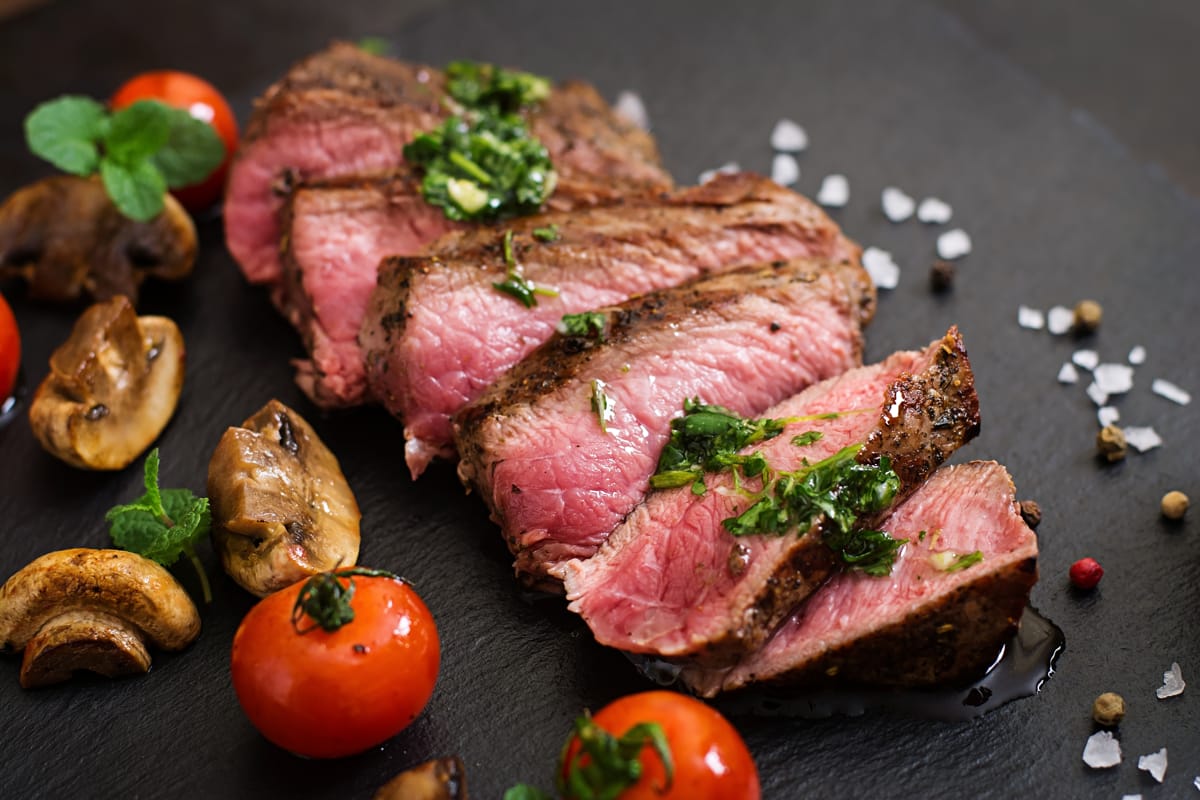
galician broth and stew
Galician broth is one of the most emblematic dishes of Galician gastronomy. It is a traditional stew made from a base of meat and vegetable broth, to which ingredients such as potatoes, turnip greens, chorizo sausage and beans are added. Galician broth is an easy dish to prepare, as the ingredients are usually cooked in the same pot until they are well blended. It is usually served hot, especially on cold winter days. Galician broth is highly appreciated in Galician gastronomy, and is considered a fundamental part of our culinary traditions.
Closely related to the Galician broth is the Galician stew, another of the most emblematic dishes of Galician gastronomy. Galician stew is a hearty and nutritious stew made with vegetables, legumes, meat and pork bacon. Nowadays, other ingredients such as beans, carrots and potatoes are often included. This dish has its origins in medieval times, when it was prepared to feed farm workers. Today, cocido gallego is still served in many restaurants and homes in Galicia, especially at festivities and events where family and friends gather.
delicious sweet or savory empanadas
Galician empanadas are a culinary delight typical of Galician gastronomy. They are characterized by their crispy dough and juicy and tasty fillings. Among the most popular fillings of Galician empanadas are tuna, scallops, cod with raisins, octopus, minced meat with onion and bell pepper or zorza. We also enjoyed the sweet empanadas, filled with apple jam, angel hair or pastry cream.
The elaboration of Galician empanada is a laborious process that requires skill and patience. The dough is prepared with flour, water, oil and salt, and is kneaded until it is smooth and elastic. The filling is pre-cooked and allowed to cool before being put into the dough. Then the pie is closed and baked at high temperature until it is golden brown and crispy on the outside. The result is a delicious and comforting dish that represents the rich gastronomic tradition of Galicia.
padron peppers
Padrón peppers are a variety of bell pepper (Capsicum annuum) originating from Galicia, specifically from the agricultural cultivation of the convent of San Francisco de Herbón, in the parish of Padrón (A Coruña). These peppers have a long history and a close connection to the Galician region.
The origin of Padrón peppers dates back to the 17th century, when the Franciscan monks of the Herbón Convent obtained the bell pepper seeds from America, probably brought by missionaries returning to the convent after their evangelizing work in the American continent. These seeds were planted in the fields of Herbón, giving rise to the variety of peppers that we know today as Padrón peppers.
In the beginning, the cultivation of Padrón peppers was carried out in small plots of land, mainly for local consumption and for the monks of the convent. However, over time, its fame began to spread throughout Galicia and, subsequently, throughout Spain, becoming one of the emblematic of Galician gastronomy.
Padron peppers are small, deep green and delicious, known for their sweet and mild flavor, although some of them can be hot. This peculiar characteristic of its flavor has given rise to the popular saying “Pementos de Padrón, uns pican e outros non” (‘Pimientos de Padrón, some are hot and some are not’), which reflects the surprise of tasting one of these peppers.
Nowadays, Padrón peppers are a very popular are grown in several areas of Galicia, although those from Herbón have a special certification that guarantees their quality and authenticity. These peppers are usually harvested between June and September, and their production has expanded to other regions of Spain and abroad.
In Galician gastronomy, Padrón peppers are typically prepared fried in olive oil and sprinkled with coarse salt, becoming a very popular appetizer throughout Spain. They can also be used in other dishes, such as tortillas, empanadas and stews.
The history of Padrón peppers is an example of how a local product can become a symbol, a cultural and gastronomic deity of a region. From their humble beginnings in the Convent of Herbón to their recognition as a delicacy in Spanish cuisine, these peppers have come a long way and have left a deep imprint on the culinary history of Galicia and Spain.

Land of great cheeses
Cheese production in Galicia has been going on for centuries, and over time different varieties with their own characteristics and unique flavors have been developed. One of the most popular cheeses in Galicia is tetilla cheese, a semi-soft white cheese in the shape of a female breast. This cheese is made with cow’s milk and has a mild and slightly acidic flavor, which makes it very pleasant to the palate.
Another very popular cheese in Galicia is San Simón cheese, a smoked cheese traditionally produced in the region of Sarria. This cheese is made from raw cow’s milk and has a semi-soft texture and a characteristic smoky flavor. It is a very appreciated cheese in Galician gastronomy, and it is usually consumed as an appetizer or as an ingredient in different dishes.
Finally, another variety of cheese worth mentioning is do Cebreiro cheese, a soft and creamy cheese shaped like a turret and made from cow’s milk. This cheese has a mild and slightly acidic flavor, and is usually consumed spread on bread or in cooking to prepare tasty dishes with a distinctive Galician touch. In short, Galician cheeses are another example of the tradition and richness of Galician gastronomy.
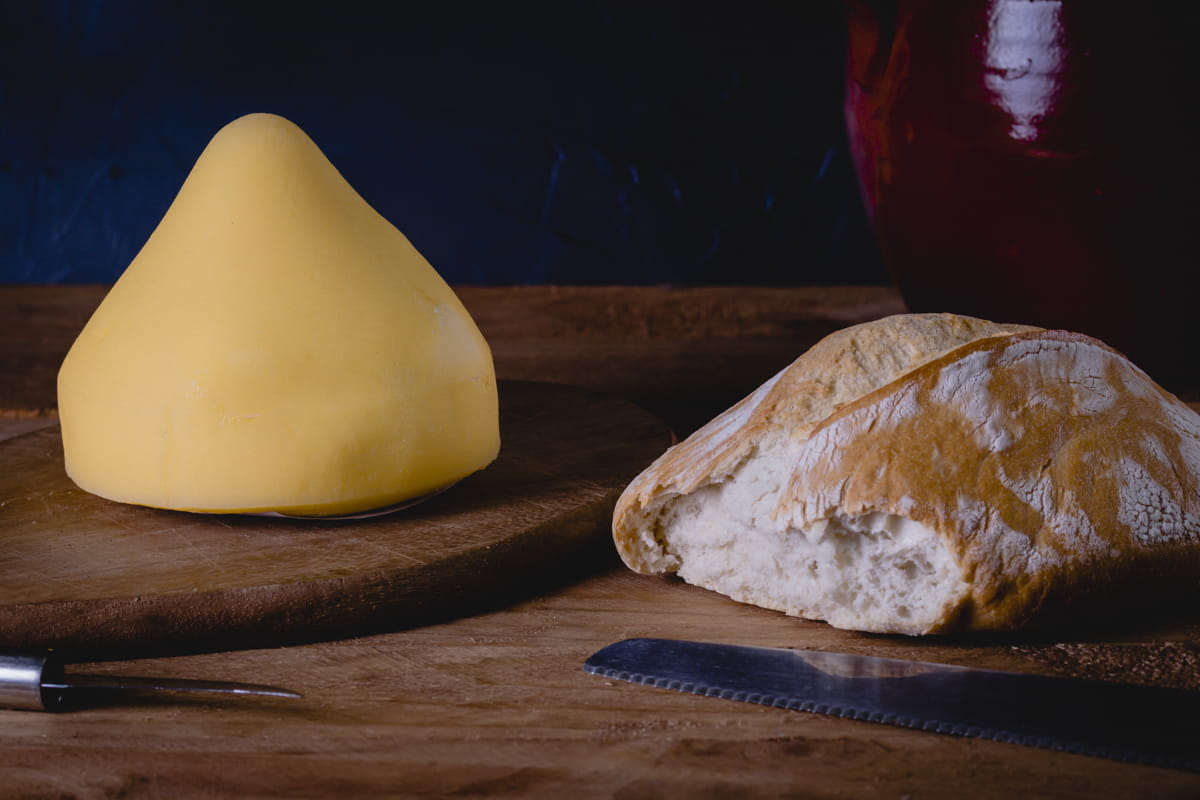
A simply spectacular bread
Galician bread is characterized for being spongy and having a hard and crunchy crust. This variety of bread is very popular in Galicia and the rest of Spain. Its preparation is based on a mixture of wheat flour, water, yeast and salt. Although it has traditionally been kneaded with commercial yeast, nowadays it is increasingly common to find Galician bread made with sourdough.
Sourdough is a mixture of flour and water that is left to ferment for several days, allowing a community of bacteria and yeast to form naturally. This sourdough becomes the leavening agent for the bread, instead of using commercial yeast. One of the main advantages of using sourdough in bread making is that it makes the fermentation process slower and longer, which gives the bread a richer and more complex flavor. In addition, sourdough also helps to make the bread easier to digest thanks to the presence of lactic acid.
When using sourdough, the process of making Galician bread is similar to the traditional one, but with some adjustments. The fermentation time is longer and more patience and deduction is needed on the part of the baker to work with the dough. In return, the resulting bread is healthier and more delicious, with a softer texture and a more authentic flavor. In addition, the use of sourdough is also a more sustainable and environmentally friendly option, as it does not depend on the use of chemicals and artificial products such as commercial yeast.
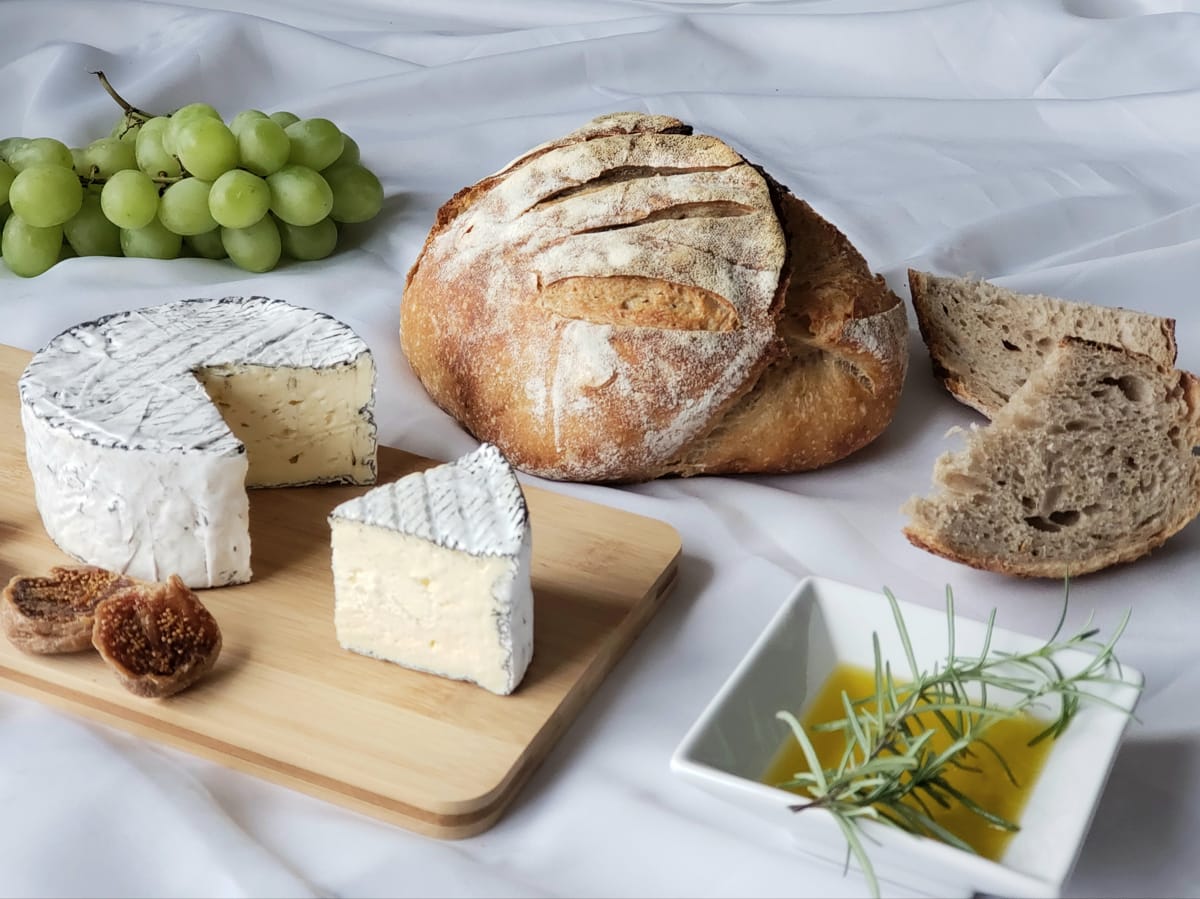
Great wines to wash it all down
Galicia is an autonomous community known for its wine production, especially white wine.
Galician wines are famous for their uniqueness and quality, thanks to the influence of the region’s climate and soil. In Galicia, mainly white and red wines are produced, each with its own distinctive characteristics.
Among the best known Galician white wines are Albariño, Godello and Treixadura. Albariño is the most recognized of all, made from Albariño grapes grown in the Rías Baixas region. This wine is characterized by its fruity and fresh flavor, with citrus and floral notes, and a saline touch that gives it a unique character. Godello is a white wine made from Godello grapes grown in the Valdeorras region. It is a denser and fuller-bodied wine than Albariño, with ripe fruit flavors and a mineral touch. Treixadura is another white wine from Galicia, produced in the Ribeiro region. This wine has a fruity and fresh taste, with herbal notes and a touch of acidity.
As for the red wines of Galicia, Mencía, Garnacha Tintorera and Brancellao stand out. The Mencía is the best known of all, made from grapes of the Mencía variety grown in the Bierzo region. This wine is characterized by its fruity and smooth flavor, with notes of red fruits and a spicy touch. Garnacha Tintorera is another red wine from Galicia, produced in the Ribeira Sacra region. This wine has an intense and complex flavor, with notes of black fruits and spices. Finally, Brancellao is a red wine little known outside Galicia, made from Brancellao grapes grown in the Ribeiro region. This wine has a soft and delicate flavor, with notes of red fruits and a touch of acidity.
From the fresh and fruity Albariño to the intense and complex Garnacha Tintorera, Galician wines are a sample of the richness and diversity of Galician gastronomy.
digestive liqueurs
Galician liqueurs are a delicious sample of the culinary culture of our region. The production of local liqueurs dates back to medieval times, and since then liqueurs of all kinds have been produced. One of Galicia’s most emblematic liqueurs is orujo, which is made from grape bagasse left over from winemaking. This liqueur has a high alcohol content and a strong, fruity flavor, and is usually drunk as a digestive after meals.
Another very popular liqueur in Galicia is the coffee liqueur, made from a mixture of coffee and orujo. This liqueur has a milder and sweeter flavor than orujo, with a coffee aftertaste that makes it very pleasant to the palate. It is a highly appreciated liqueur in Galician culture, and is usually drunk after meals or as an after-dinner drink.
Finally, another very popular liqueur variety in Galicia is crema de orujo. Unlike traditional orujo, this cream is made by mixing the orujo base with milk and sugar, which gives it a creamy texture and a sweeter taste. It is a very pleasant and easy to drink, ideal for after meals or social gatherings. In addition, crema de orujo can also be used in the preparation of cocktails and desserts, which makes it a very versatile ingredient in Galician gastronomy.

and Desserts for demanding palates
The rich and varied Galician gastronomy not only stands out in the field of main dishes and tapas, but also has a wide range of delicious typical desserts that deserve to be mentioned. These sweets, made with traditional ingredients and following centuries-old recipes, are a true delight for the palate and another example of the cultural richness of the region. Here are some of Galicia’s most iconic desserts:
Tarta de Santiago: Undoubtedly, the most famous and emblematic Galician dessert. It is an almond cake named after the capital of Galicia, Santiago de Compostela. Tarta de Santiago is a delicious and simple sweet, made with ground almonds, sugar, eggs and lemon. Its most distinctive feature is the drawing of the cross of Santiago that adorns its surface, made with powdered sugar.
Filloas: filloas are a kind of thin and delicious crepes, made with flour, milk or water, eggs and sugar. They can be filled with different ingredients, such as honey, cream, chocolate or applesauce, although they can also be eaten alone. Filloas are a very popular dessert during Carnival, but they are also enjoyed at other times of the year.
Orejas: orejas are another typical dessert of the Galician Carnival. These fried flaky dough delicacies have a shape reminiscent of ears, hence their name. They are made with a dough of flour, butter, eggs and sugar, which is stretched and fried in hot oil. Finally, they are sprinkled with powdered sugar, which gives them a sweet and crunchy touch.
Bica: a traditional sponge cake from the province of Ourense, especially from the region of Trives. This dessert is made with eggs, sugar, flour, butter and yeast, and is characterized by its spongy texture and mild flavor. The Galician bica is usually served at parties and celebrations, accompanied by a cup of hot chocolate or coffee.
Larpeira gallega: a typical sweet from the province of Lugo, which is made from bread dough enriched with eggs, sugar, butter and aniseed. The larpeira is presented in the form of a doughnut or braid and is decorated with almonds and powdered sugar.
Melindres gallegos: a doughnut-shaped sweet, made with flour, eggs, sugar, butter and aniseed. They are very popular in the province of A Coruña, especially in the region of Melide, from where they take their name. Melindres are characterized by their spongy texture and slightly aniseed flavor.
In short, Galician pastries are as rich and varied as the rest of its gastronomy, offering a wide range of desserts that delight all palates. Whether in the form of cakes, sponge cakes, crepes or fried sweets, these traditional desserts reflect the cultural and culinary richness of Galicia.
News
Santiago(é)Tapas is back, with more requirements and variety
Santiago(é)Tapas has long been an unmissable event in the city, delighting the palate. This time, it will return with more requirements and variety from 19 February to 8 March 2026.
The statues from the Portico of Glory that were held by the Franco family return to Santiago
Santiago de Compostela is celebrating the return of the statues from the Portico of Glory, which are coming home after more than seventy years. These are the figures of the...
What to do in December in Santiago de Compostela
The last month of the year is always packed with Christmas parties and celebrations. It’s a season full of plans and events to enjoy to the fullest. Here’s a list of things to do in Santiago de Compostela in December.

